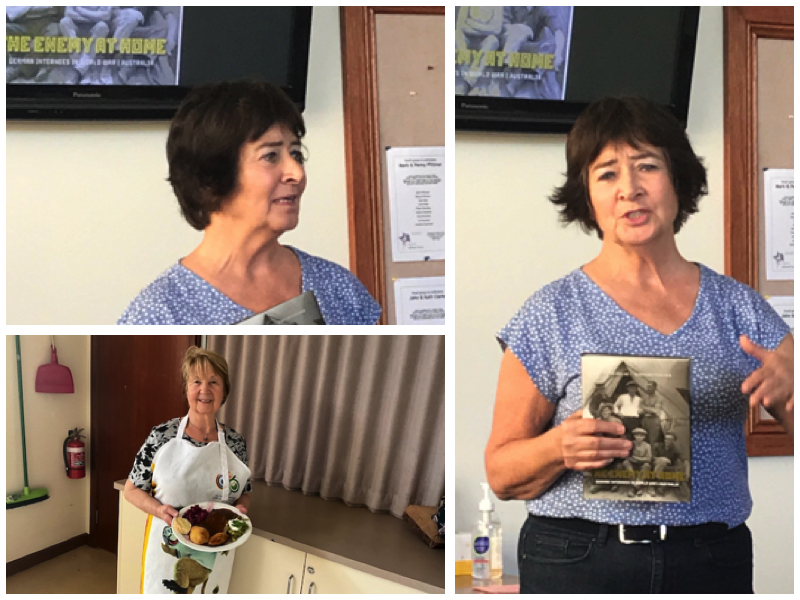The Enemy at Home
by John Clarke
Whose home is it? Who is the enemy?
The Enemy at Home – German Internees in World War I Australia is the title of a book by Nadine Helmi and Gerhard Fischer, and it is a title that invites such questions. Was Australia less the home of second and third generation descendants of German immigrants than it was the home of children of Anglo-Saxon settlers? Did those of German descent represent a threat to their fellow Australians? Were they enemies? What is certain is that those of Anglo-Saxon descent – at least those in authority – were the enemies of their fellow Australians of German descent. Over 7,000 were interned.

Nadine Helmi was the guest speaker at the last meeting of the German speaking group Kaffee und Kuchen. She described how the book, winner of the 2012 National Trust Heritage Award, evolved from the discovery in 2007 in Dorfen, Germany of a substantial set of photographs, taken by Paul Dubotzki, and kept in the home of Dubotzki’s two elderly daughter for 87 years.
In 1914 Paul Dubotzki had accompanied an expedition to Sumatra and China as the official photographer. He was in New Guinea when war broke out. Evading capture, he made his way to Adelaide, but there in 1915 he was discovered and interned on Torrens Island as an enemy alien. His camera was not confiscated, and so he began recording on film the internees’ experience, first on Torrens Island and later at Holsworthy and Trial Bay, both in New South Wales.
His fellow internees included men of many professions – the authorities selected leaders of communities, not necessarily with any political views, to intern – and with his camera Dubotzki produced quite dramatic images of life in the internment camps. He photographed men at their work, blacksmiths, bakers, carpenters. And men at leisure, creating human pyramids, dressed in costume for theatrical productions, holding musical instruments. They made of their camps an active, vital community. Only women were missing. Visits from wives, mothers, sisters and daughters were rare.
To complement the photographs Nadine Helmi and Gerhard Fischer collected letters, often tucked away in family archives, of many internees, letters that expressed bewilderment, shock, but also resilience and hope.
Paul Dubotzki was repatriated to Germany in 1919. He started a photographic business in Dorfen, Bavaria, married and had three children. At first he was a commercial photographer, but soon he began to capture the beauty of the local landscape on film and with paint on canvas. World War II brought tragedy with the death of his only son. Paul Dubotzki died in 1962.
The meeting was preceded by a German luncheon of Sauerbraten and vegetables – an event every three months, eagerly anticipated by members – and was followed by the usual coffee and cake. The next meeting will be held at the Langmeil Centre, 7 Maria Street, Tanunda on Monday, 30 October at 1 pm.
The Barossa German Language Association’s next major event will be Konzert at the Chateau, a concert at Chateau Tanunda by renowned pianist Clemens Leske, on Sunday afternoon, 26 November.
